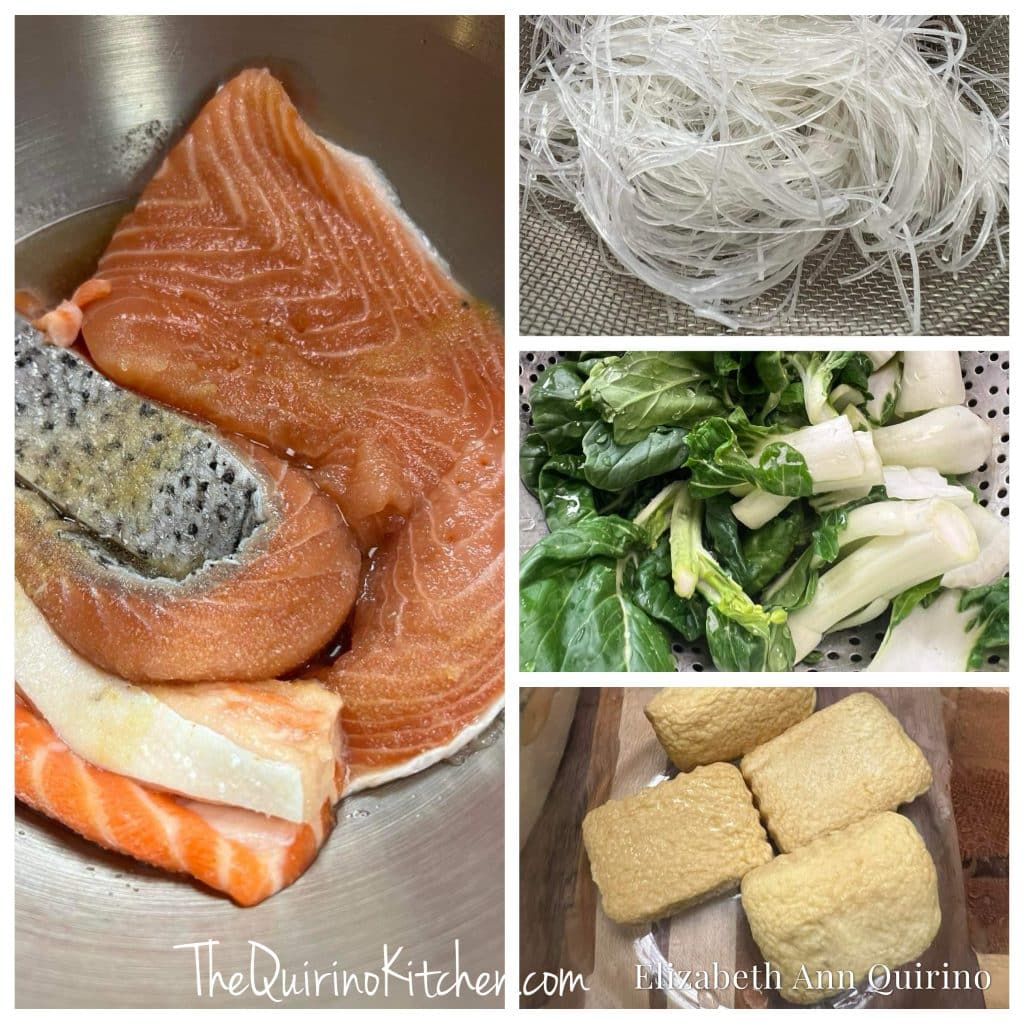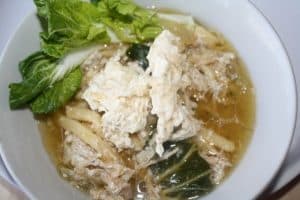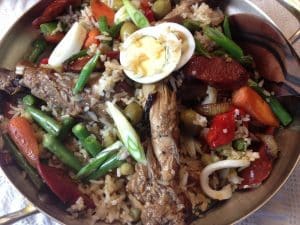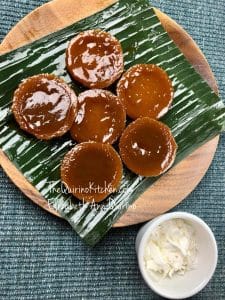Pesang Salmon Belly with Sotanghon
As an Amazon Associate and member of other affiliate programs, I earn from qualifying purchases.

If my father was still around, I would cook this Pesang Salmon Belly with Sotanghon for him. This is a recipe I cook again and again for my family. Cooking pesang isda (fish) is on my regular menu rotation frequently. Some things I learned from my late dad, Gualberto Besa, stay with me forever. He always believed in the benefits of eating fish several times a week, if not nearly every day. And he made sure to instill that in me since my childhood.
What is Pesang Isda?
Pesang Salmon Belly with Sotanghon is a one-pot fish stew of salmon belly slices simmered in a clear broth flavored with ginger, onions, garlic and patis (fish sauce). As the cooking continues, one can add vegetables like potatoes, bok choy, or leafy greens preferred. To finish it off, I added sotanghon noodles, which is a meal extender, but the silky noodles add a flavorful depth to the entrée.
My culinary friend and food anthropologist Karen Shih of Pampanga, as she quoted Philippine food historian Doreen Gamboa Fernandez (who in turn quoted Gloria Chan-Yap), reminded me that the word ‘pesa’ comes from Hokkien which means ‘plain boiled’ and it is used only in reference to the cooking of fish. The complete term in Hokkien being peq + sa + hi, the last morpheme meaning ‘fish’. In some households, pesang isda (fish pesa) must be accompanied by the traditional Kapampangan tiltilan or sawsawan (side dipping sauce) of garlic, crushed tomatoes, mashed tauri (fermented tofu), water – all sauteed in cooking oil.

What goes into a Pesang Salmon recipe?
For this recipe, I went to the Asian market to specifically purchase the salmon belly. And like I often remind my friends; it is best to cook fish and seafood the day you purchased it. So, as soon as we got home from the market, I prepared my ingredients, which was a short list.
- Salmon Belly
- Onions
- Ginger
- Garlic
- Potatoes
- tomatoes
- Chinese pechay or bok choy
- fish tofu, fried (store-bought)
- Broth
- Sotanghon (cellophane noodles)
- Patis (fish sauce)
Why use Salmon Belly?
Salmon Belly has more fat in it. There are strips of fat underneath it and adds a depth to the flavor of the stew. Some fish mongers trim off this fat. It is good to have it on the salmon, as it adds that delicious taste and a softer fish texture to the entire simmering stockpot of stew.
Pesang Salmon Belly with Sotanghon
Equipment
- Large Stockpot
Ingredients
- 1 pound Salmon Belly, cut into 4-inch slices
- 6 to 8 ounces sotanghon noodles
- 1 Tablespoon lemon or calamansi juice
- 2 Tablespoons vegetable oil
- 1 whole medium-sized white or yellow onion, chopped
- 2 cloves garlic, peeled, minced
- 1 knob (1 inch slice) fresh ginger, peeled and sliced thin
- 2 whole tomatoes, sliced
- 1 Tablespoon patis (fish sauce)
- 6 cups vegetable broth (or water)
- 2 whole potatoes, peeled, quartered
- 1 whole fresh bok choy, sliced into 3-inch pieces
- 4 to 6 pieces store-bought fish tofu squares
- 1/2 teaspoon salt
- 1/4 teaspoon ground black pepper
For serving
- steamed rice
Instructions
Prepare the salmon belly and the sotanghon noodles
- Slice long strip of salmon belly into 4-inch pieces.In a large bowl, marinate the salmon with lemon or calamansi juice for 20 to 30 minutes (but not longer than that).Set aside.
- In a medium-sized bowl filled with water, soak the sotanghon (cellophane noodles) for about 30 minutes till soft. When noodles are soft, drain water.Set noodles aside.
To cook Pesang Salmon Belly:
- In a large stockpot, over medium high heat, add the oil.When oil is hot enough, saute the onions, garlic and ginger for about 2 minutes till fragrant and onions are soft.Add the tomatoes. Pour the patis. Combine well.
- Pour the broth (or water). Add the salmon belly pieces into the stockpot.Add the potatoes. Cover and simmer till salmon and potatoes are cooked, about 15 to 18 minutes.Add the sotanghon noodles.Add the bok choy and fish tofu. Season with salt and black pepper.Cook for 5 minutes more till bok choy softens.Serve warm with steamed rice.
Cook's comments:
- To store: If there are leftovers, keep in a covered container and refrigerate. This will keep in the refrigerator for 2 days.This is a forgiving fish stew. One can add other leafy greens or vegetables in season to simmer together with the salmon belly. If salmon belly is not available, you can use wild-caught salmon fillets.
Nutrition
Copyright Notice: Hello, Friends! Please DO NOT LIFT OR PLAGIARIZE The Quirino Kitchen recipes on this blog, my original recipes, stories, photos or videos. All the images and content on this blog are COPYRIGHT PROTECTED and owned by my media company Besa-Quirino LLC by Elizabeth Ann Quirino. This means BY LAW you are NOT allowed to copy, scrape, lift, frame, plagiarize or use my introductory recipe notes, photos, essays, stories and recipe content on your websites, books, films, television shows, videos, without my permission. If you wish to republish this recipe or content on media outlets mentioned above, please ASK MY PERMISSION, or re-write it in your own words and link back to my blog TheQuirinoKitchen.com to give proper attribution. It is the legal thing to do. Thank you. Email me at [email protected]







